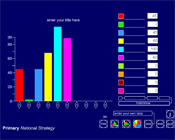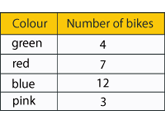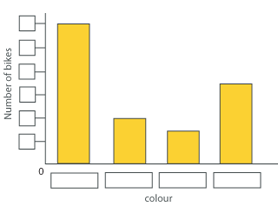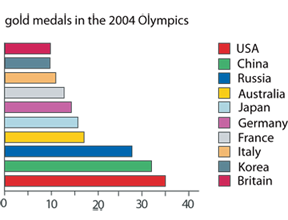Teaching guidance
This teaching guidance document suggests some of the key vocabulary, models, images and practical equipment that children should experience and be able to use. It also includes some teaching tips to provide a few starting points for ways of supporting children with this area of mathematics.
 Can I create and interpret bar charts? - teaching guidance | 465KB
Can I create and interpret bar charts? - teaching guidance | 465KB 
Consolidation and practice
These resources are to support children in guided or independent work. Roll over the highlighted resource for a description.
Data handling

This interactive teaching program (ITP) is an ICT-based tool to support the exploration of data. Data handling ITP allows the child or teacher to enter data into a table and then create a vertical bar chart, a horizontal bar chart or a pie chart. The user can select from existing datasets, which can then be amended to show the impact and change on the charts, or they can enter collected data.
Opportunities to use and apply
Possible contexts include:
- science, e.g. Investigate the number of different kinds of minibeast in a garden and decide how to represent this (table, pictogram, bar chart); answer questions, using the data.
- ICT, e.g. Discuss with the class how they can find out whether the balance between boys and girls in their class is the same as for the school as a whole. Enter the number of boys and girls for the class and for the school into a data-handling package to produce two bar charts (one for the class and one for the school) and make comparisons. Discuss the difficulties in comparing the graphs.
- secondary information, e.g. Use and interpret examples of bar charts from brochures, magazines and newspapers.
Confirming learning
Ask probing questions such as:
- In the 2008 Olympics the USA won 36 gold medals. Is that more or less than in 2004? How many more or less?
- What labels would you add to the axes of this graph?
- How would you work out how many gold medals Britain won in 2004?


 Handling data
Handling data

